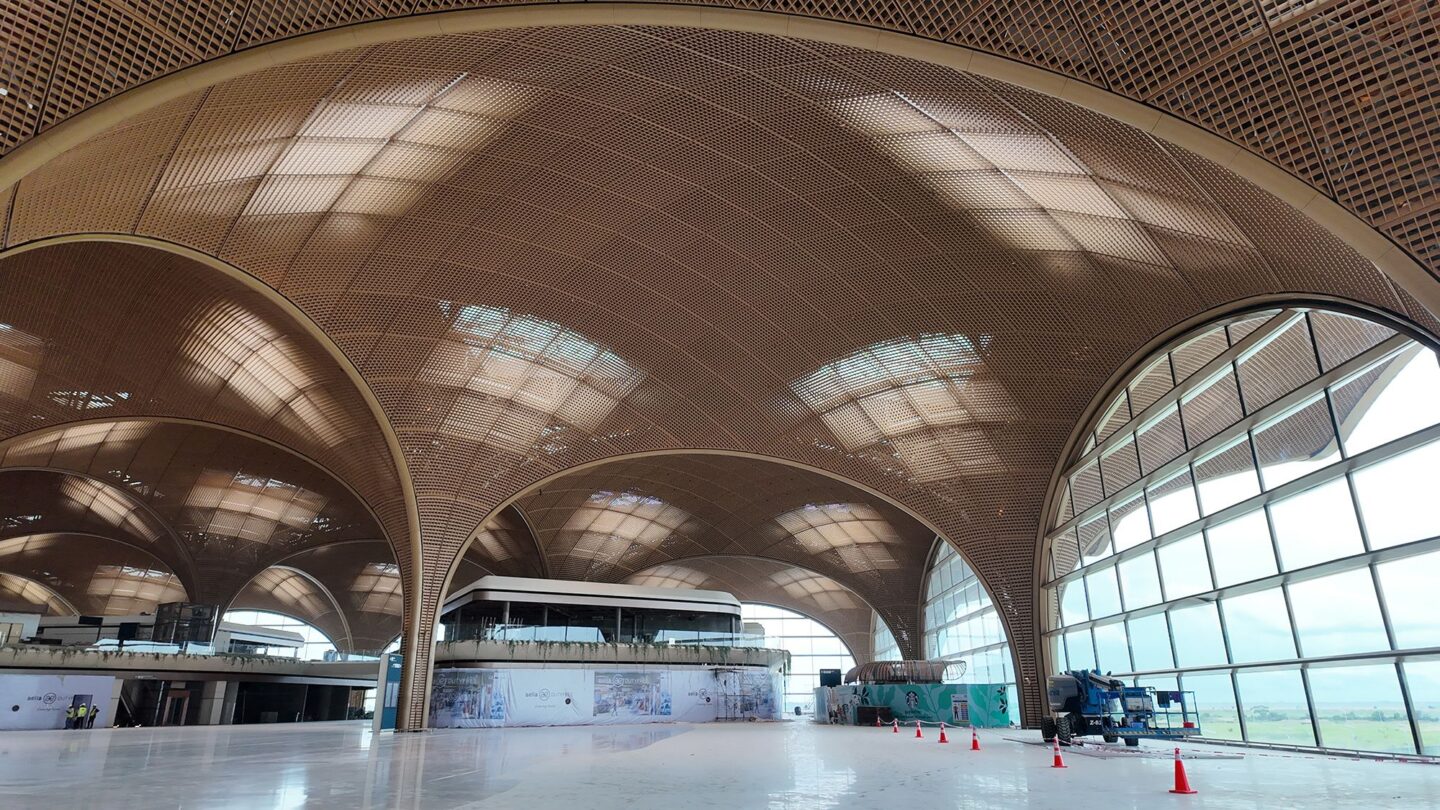Planes, prayers, and a golden Buddha: Inside Cambodia’s $2 billion-dollar airport gamble

By Lilit Marcus, CNN
Kandal, Cambodia (CNN) — On a humid day in early September, orange-robed monks gathered in the departures hall of Cambodia’s newest airport, chanting blessings over a 30-foot golden statue that now watches travelers as they prepare for departure.
Only after the nine-ton Buddha was blessed could planes begin to land at Phnom Penh’s Techo International Airport.
Four days later, Air Cambodia flight K6 611 from the southern Chinese city of Guangzhou taxied in under the spray of celebratory water cannons as traditional Khmer dancers in silk costumes performed in the arrivals hall.
On October 20, Cambodian Prime Minister Hun Manet cut a ribbon to officially inaugurate the airport.
“This is a new achievement reflecting Cambodia’s long-term development vision,” he told reporters at the site.
Above all, Hun Manet’s government hopes the airport will be filled with tourists. Despite its UNESCO-listed temples, beaches, and famously affordable prices, Cambodia attracts only about 2.5 million international visitors a year — a fraction of the 32 million who go to Thailand and the 18 million who visit Vietnam.
Techo International, a reported $2 billion project about 18 miles south of Phnom Penh, is meant to change that. The 87,000-square-foot facility, named for a Khmer military honorific title granted by the king, is being billed as a gateway to a new era of tourism and investment in Cambodia’s under-visited south.
Inside, natural light filters through floor-to-ceiling windows onto pale wood floors and tropical greenery. The curving roofline, designed by British firm Foster + Partners, draws inspiration from the ornate headdresses of traditional Apsara dancers.
Nikolai Malsch, a senior partner at Foster + Partners, said the design emphasizes clear sightlines and minimal confusion. Travelers should never feel trapped in a maze of corridors.
“It’s a very simple binary decision,” he explained. “Walking to the gates, you come to a point where your gate is either left or it’s right.”
The terminal’s maximum walking distance, he added, is just 500 meters – roughly 550 yards — from center to end.
Beyond efficiency, the building aims to be unmistakably Cambodian. The roof’s swooping ridges double as rainwater catchment points. Local coffee chain Brown Coffee opened early to serve lattes to construction crews.
Charles Vann, director of Cambodia Airport Investment Company, a key financial backer of the airport, said he hopes the airport will help act as a draw for travelers in its own right. “We believe that this airport can attract a lot of visitors and tourists to come to Cambodia, similar to Dubai (or) London,” he told CNN.
The government has positioned Techo International as both a modern infrastructure project and a point of national pride. Alongside facial recognition scanners and environmental certification, the airport even has its own theme song — “Power of Techo International Airport” — shared on Prime Minister Hun Manet’s social media accounts.
“The aviation sector is one of many ways to connect tourists, businesses, political networks, and multi-purpose missions,” Hun Manet wrote. “Cambodia has actively expanded and upgraded its international airports to meet growing travel demand, enhancing connectivity for travelers.”
Techo isn’t the country’s only recent airport milestone. The $1 billion Siem Reap-Angkor International Airport (SAI), opened in 2023, was built under China’s Belt and Road Initiative, which aims to connect more of the world, and extend Beijing’s influence, through Chinese-made infrastructure.
Both airports form key pillars of Cambodia’s “Sacred Tourism 2025-2035” master plan — a blueprint to develop wellness, agricultural, and community tourism. The country wants to diversify its offering beyond Angkor Wat, the ancient Hindu-Buddhist temple complex currently seen as its star attraction.
For Cambodia, new runways promise connection. Flights now link Phnom Penh to Bangkok, Beijing, Hanoi, Singapore, and Kuala Lumpur, with Turkish Airlines and Etihad set to add direct routes from Istanbul and Abu Dhabi this fall, making it much easier for visitors from Europe and the Middle East to access Cambodia.
Not everything is rosy in Cambodia’s travel forecast. The airport’s big inauguration event was held four days after South Korea issued a rare “code black” travel warning for parts of Cambodia, following the death of a Korean student allegedly tortured at a phone scam center. International advisories warn travelers of heightened risk of crime in Phnom Penh and dangers from decades-old unexploded ordnance in other regions.
Some in the aviation industry are skeptical of Cambodia’s big tourism ambitions.
Shukor Yusof, founder of Endau Analytics, believes that a shiny new airport is not enough on its own to bring tourists.
“Vietnam and Thailand have more to offer in terms of culture, food and, more importantly, security,” he says. “Apart from Angkor Wat and the Killing Fields, there aren’t other spots to lure tourists to Cambodia.”
“At the moment Cambodia is struggling to overcome a reputation as a destination for syndicates involved in scams, frauds and human trafficking.”
Across Southeast Asia, the Belt and Road program has also funded a high-speed train connecting Laos and China, and Chinese investment is helping build a metro system in Vietnam’s capital, Hanoi.
Phase two of Techo’s development will eventually add a train connection to Phnom Penh’s city center. For now, most passengers arrive by private car or tuk-tuk along the new highway stretching through rice fields.
Meanwhile, Phnom Penh International — the Cambodian capital’s old airport which had already been eclipsed in size by Siem Reap-Angkor International — has now closed to traffic and there’s no official plan yet for its next life.
But under the watchful gaze of its departure hall Buddha, Techo International is beginning to spring into life, step by step.
Cambodia has built the airport it hopes will redefine its global image. Now it just needs the world to show up.
The-CNN-Wire
™ & © 2025 Cable News Network, Inc., a Warner Bros. Discovery Company. All rights reserved.
